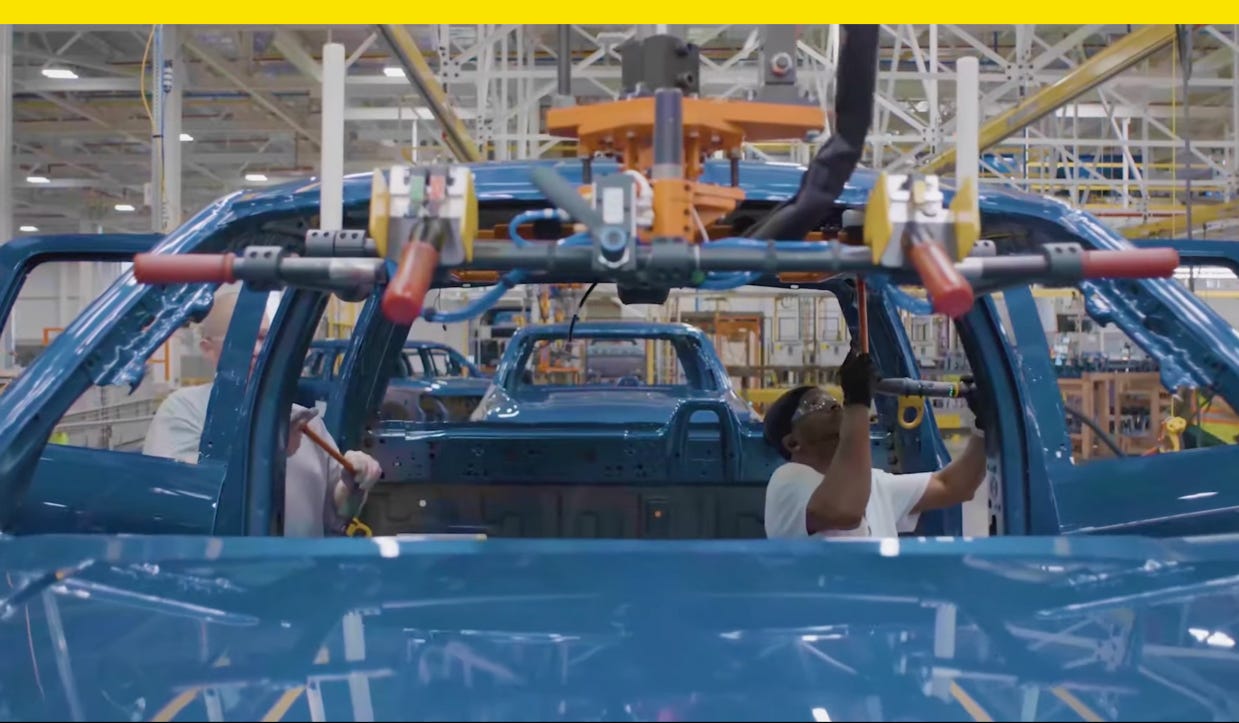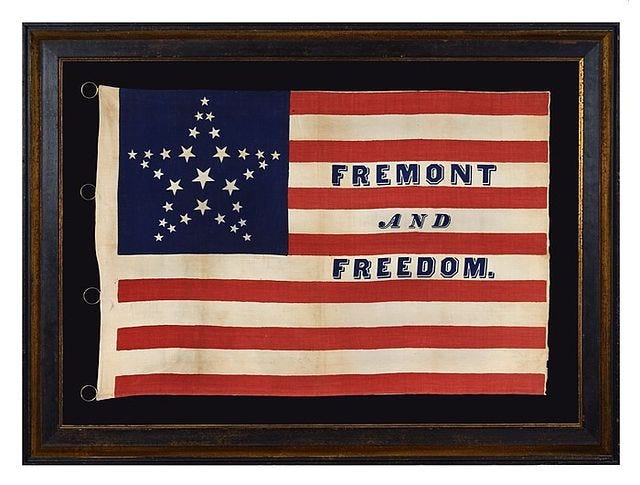Trump’s closing message of the campaign is us vs. they/them
Plus: Electric vehicles are getting hit in attack ads, and one group is fighting back
Hello, in this issue we’ll look at how the Trump campaign is shifting away from kitchen table issues to culture wars and why electric vehicles are responding to swing state attack ads. Scroll to the end to see: what happens when you mix a backpack and jacket 🎒
Trump’s closing message of the campaign is us vs. they/them
In the campaign’s closing weeks, former President Donald Trump’s campaign and outside Republican groups are pivoting to culture wars issues over kitchen table issues in their advertising, and their ire is directed at policies related to transgender people.
A Gallup poll released earlier this month found the issues voters are most concerned with are the economy, democracy in the U.S., and terrorism and national security. At the bottom of the list is transgender rights. And yet Republicans have spent more than $21 million on TV ads that attack policies that support transgender or LGBTQ people as of Oct. 9, according to data from the ad tracking firm AdImpact reported by ABC News.
Trump’s ad “Access,” which aired heavily earlier this month during NFL and college football games, attacked Harris for supporting gender surgery for inmates and ended with a narrator who says, “Kamala’s for they/them. President Trump is for you.”
The tagline has a double meaning, playing on conservative sneers over pronouns as well as long-time tropes on the right about government spending and benefits that go to out-groups (Republicans are actually outsized beneficiaries of government spending themselves, with seven times as many Republican counties than Democratic counties now reliant on government assistance for at least quarter of their total personal income, data published by the Wall Street Journal found).
Vice President Kamala Harris told Fox News when asked about the ad that her comments about surgeries merely followed the law as it existed under Trump’s presidency, and she criticized Trump’s focus on the issue as a scare tactic and distraction from his lack of plans.
“$20 million on that ad, on an issue that, as it relates to the biggest issues that affect the American people, it’s really quite remote,” Harris said. Trump is “trying to create a sense of fear in the voters because he actually has no plan in this election that is about focusing on the needs of the American people.”
Indeed, the rise in Republican ads attacking LGBTQ rights has coincided with a decrease in ads about crime, immigration, inflation, and the economy.
While transgender issues are at the bottom of voters’ interests, Trump’s us vs. they/them framing of the campaign is both social and economic. His ad ends with a shot of Harris pictured posing for a photo with a drag queen in comparison to Trump with workers over a headline about his tax cut proposals.
Former President Barack Obama didn’t mention Trump’s ads during a campaign stop in Madison, Wisc., Tuesday, but he did mention Trump’s approach. The 44th president sees his successor’s us vs. them messaging as the latest example of an age old strategy of dividing people to gain power.
“Donald Trump wants us to think this country is hopelessly divided between us and them,” Obama said. “He employs this strategy like politicians have through millennia because having people divided and angry boost his chances of being elected.”
Electric vehicles are getting hit in attack ads, and one group is fighting back
Electric vehicles, or EVs, can’t help but get dragged into the election.
Though EV sales are up 11% year over year in the U.S., Cox Automotive’s Kelly Blue Book announced this month, they’ve frequently found themselves at the center of swing state attack ads that could make it harder for EVs to break into conservative markets.
Political party is the single greatest differentiator when it comes to EV perceptions, a 2023 Gallup poll found, with 71% of Republicans saying they would not buy an EV. Compare that to Democrats, 82% of whom said they would consider buying an EV or already own one.
That partisan split shows up in how EVs are portrayed in political ads. Trump’s campaign has spent nearly $1 million airing an ad titled “Standing Up” in Michigan that accuses Harris of planning to end gas-powered cars and claims Trump will save auto jobs. And the American Fuel & Petrochemical Manufacturers, a lobbying group, has spent $3 million airing ads warning about “a ban on most new gas cars” in swing states asking viewers to contact their vulnerable incumbent Senate Democrat.
One group, the EV Politics Project, is pushing back against attacks from the right with “Political Noise,” an ad airing in Michigan that asks viewers to tune out political criticism about EVs because these vehicles actually mean “good American jobs” and “billions in new investments.”
“When politicians bash EVs America loses,” says the ad, which was first reported by InsideEVs, a trade publication. Another ad from the group called “Money Pit” dismisses attacks on EVs as backed by the oil industry.
Tesla CEO Elon Musk, whose Model Y, Model 3, and Cybertruck were the top three top-selling EVs of the third quarter, is doing his darnedest to prove you can drive an EV and vote Trump. Remember, only one major party prominently featured an EV in its national convention this summer and it wasn’t the Democrats.
But Musk, who’s made false claims about voter fraud at recent campaign events with Trump, might not be taking the most effective approach to truly changing hearts and minds. Selling EVs to Republicans looks different than it does for Democrats, argues Mike Murphy, a Republican political consultant and CEO of the EV Politics Project, and it comes down to selling the experience.
“Electric automakers must go back to the basics of selling cars, not what conservatives often call ‘luxury opinions,’” Murphy wrote in an editorial for InsideEVs. “Focus on the vehicle: Fast, fun, no gas. Less regular maintenance needs. All of these attributes are big winners with Republican consumers. Why? They focus on the driving experience, not political issues.”
If EVs can make it through the election, it’s a sales approach that might help the auto industry close its EV partisan gap.
Have you seen this?
How the humble ballot box became a political lighting rod. Ballot drop boxes have been shown to increase voter turnout, but Trump has long disparaged them. [Fast Company]
The merch is the message. From “Kamala Walz” camo trucker hats to Trump’s infamous red “MAGA” caps, modern campaigns know that the right piece of merch can say more than any policy speech. [It’s Nice That]
Charlamagne files cease-and-desist order against Donald Trump over campaign ad. The radio host has issued legal notice to Trump demanding he remove a portion of a campaign ad featuring his voice. [Vibe]
Samsonite has teamed up with upcycling designer Nicole McLaughlin for a jacket made entirely from four of Samsonite's signature Ecodiver backpacks. “Most of the work came down to the placement of the bags and where pockets/storage would make the most sense.” [Highsnobiety]
History of political design
Brought to you by Whig, my new newsletter about politics, First Families, and pop culture. Subscribe here.
“Fremont and Freedom” flag (1856). John Frémont, one of California’s first two U.S. Senators, was the first Republican Party presidential candidate. This “Fremont and Freedom” flag has 31 stars arranged in a star after California had been admitted as the 31st state.
Like what you see? Subscribe for more:
Politics in the front, pop culture in the back
Subscribe to my new free newsletter about politics, First Families, and pop culture:










